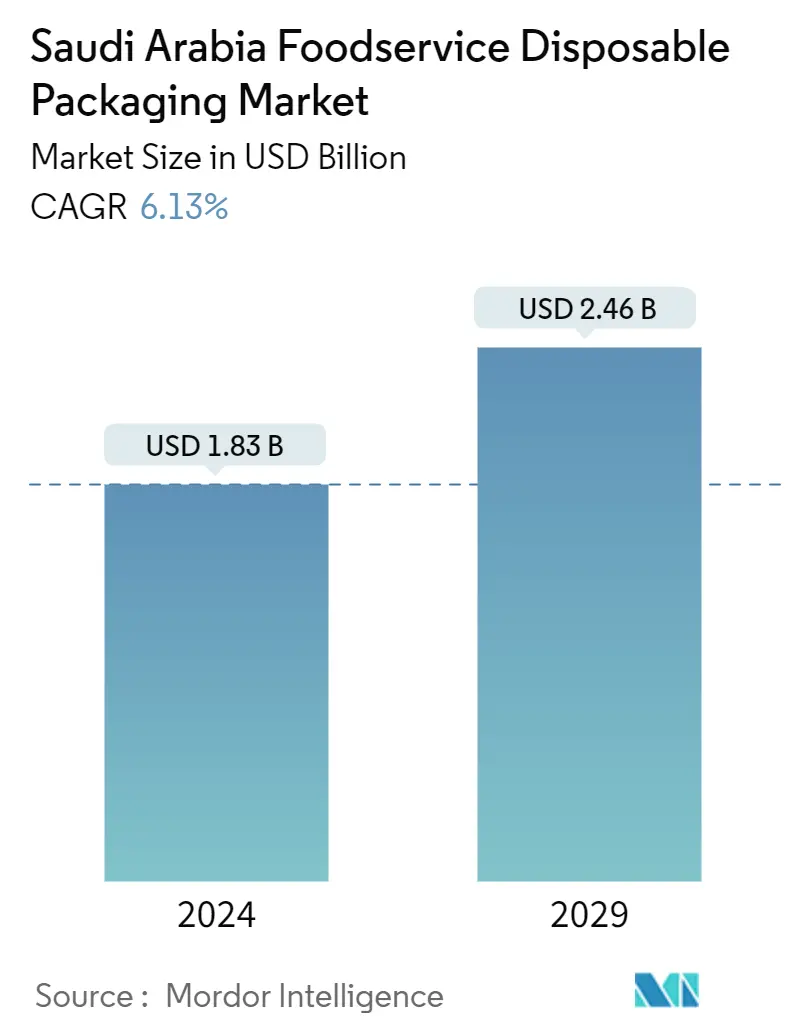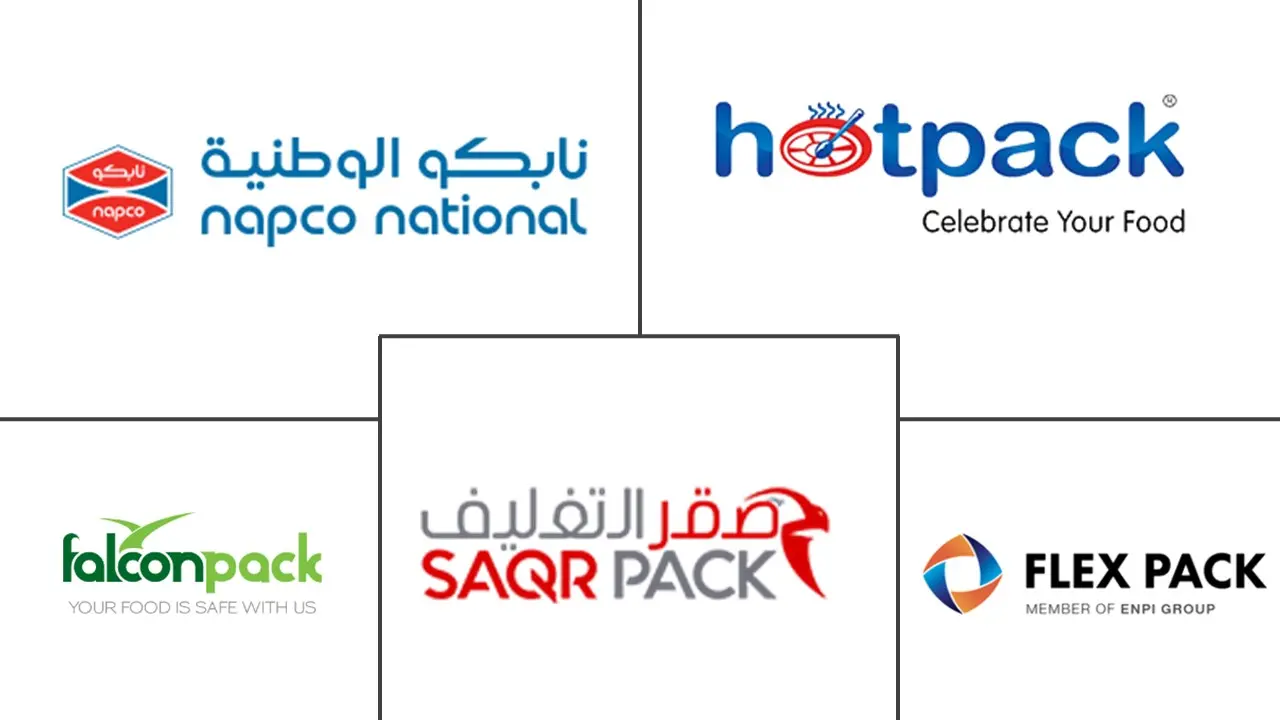Market Size of Saudi Arabia Foodservice Disposable Packaging Industry

| Study Period | 2019-2029 |
| Base Year For Estimation | 2023 |
| Market Size (2024) | USD 1.83 Billion |
| Market Size (2029) | USD 2.46 Billion |
| CAGR (2024 - 2029) | 6.13 % |
| Market Concentration | Medium |
Major Players
*Disclaimer: Major Players sorted in no particular order |
Need a report that reflects how COVID-19 has impacted this market and its growth?
Saudi Arabia Foodservice Disposable Packaging Market Analysis
The Saudi Arabia Foodservice Disposable Packaging Market size is estimated at USD 1.83 billion in 2024, and is expected to reach USD 2.46 billion by 2029, growing at a CAGR of 6.13% during the forecast period (2024-2029).
The increasing workforce participation in Saudi Arabia and changing lifestyles are expected to drive the Saudi Arabian market for ready meals over the forecast period. Convenience food is becoming increasingly popular among the younger generation as it offers takeout and home delivery to enhance the user experience to meet modern needs. The number of outlets is also rising due to the increasing consumer spending on fast food.
A diverse urban landscape is driving the demand for convenient, on-the-go lightweight foods in the country, which are shelf-stable and do not require refrigeration. In recent years, ready-to-eat food has evolved into one of the most diverse segments of the Saudi Arabian food service. On-the-go eating options with organic food products offered by food service vendors for consumers are one of the emerging trends in the country as they provide everything from frozen sweets to appetizers and meals.
With modern life being busy, consumers choose meals based on ease, convenience, and speed. With the demand for convenient and high-quality food constantly on the rise, pressure is placed on manufacturers to deliver safe and exciting new products to customers. The trend of convenience packaging, changing lifestyles, and the growth of smaller households is increasing the demand for single-serve options.
Sustainability is at the core of Vision 2030 as the country moves toward a Net Zero world by 2060. Saudi Arabia is at the forefront of clean energy and sustainability. Plastic recycling efforts in the country are driven by circular goals set by the Saudi Arabian government policy under its Vision 2030 strategy. Vision 2030 aims to divert 100% of municipal solid waste, 60% of construction waste, and 85% of industrial waste from landfills, providing a roadmap for private and public bodies to set up recycling projects in Saudi Arabia.
The GCC market, including Saudi Arabia, is anticipated to witness a surge in the demand for polymers, driven by the recovery in the packaging, construction, and industrial sectors. However, market vendors face a significant challenge due to the price volatility of polymers and other raw materials in the domestic market. Fluctuating prices for oil and gas distort the planning process for cost estimations, which vendors usually provide to end users.
In the past few months, polypropylene (PP) prices in Saudi Arabia have been backed by crude oil prices, which are also escalating. The price of crude oil in Saudi Arabia is increasing due to the increasing costs of crude oil globally and the changing dynamics of the global oil market. Therefore, this growing trend in polymer prices in the upcoming period may dent the industry margins.
The COVID-19 pandemic has impacted the food service industry, with different segments of the Saudi Arabian market being affected to varying degrees. Travel restrictions primarily influenced the restaurant dining segment, the general avoidance of people attending larger gatherings, and social distancing regulations. This resulted in the closure of an increasing number of restaurants in the country, followed by reduced profits.
As the spread of COVID-19 began to decelerate, the shift in focus started to encompass the market disruptions and their effects on the packaging markets. Some of the biggest packaging priorities and discussions revolved around sustainability. The highly debatable use of plastics, recycling, and development of bio-materials, to name a few, have been subject to intense discussion and consumer pressure. Across the Middle East, as in many other regions, there has been an increased demand for specific packaging since the pandemic's start. However, some sectors have experienced fallout from the imposed travel restrictions.
